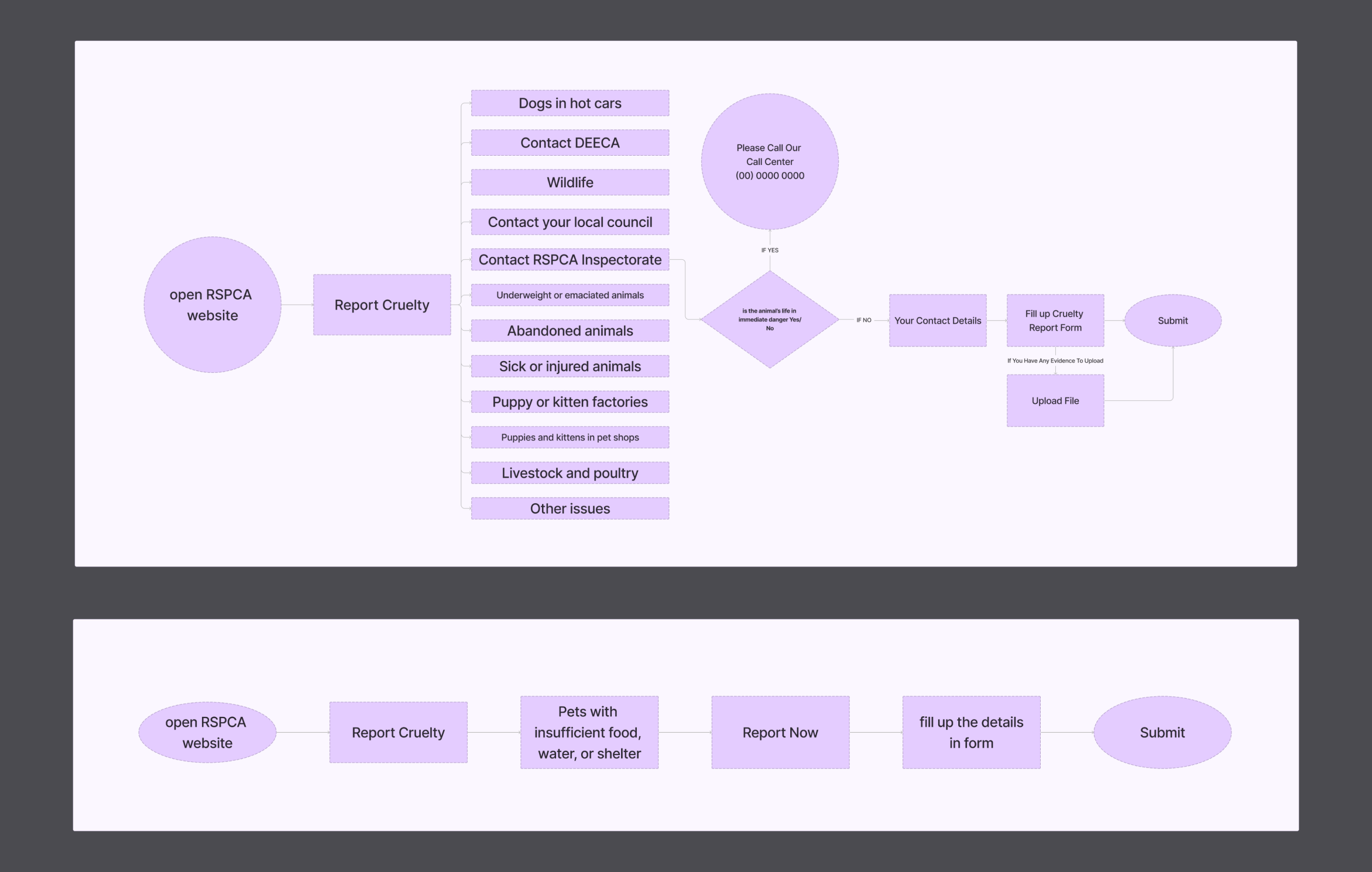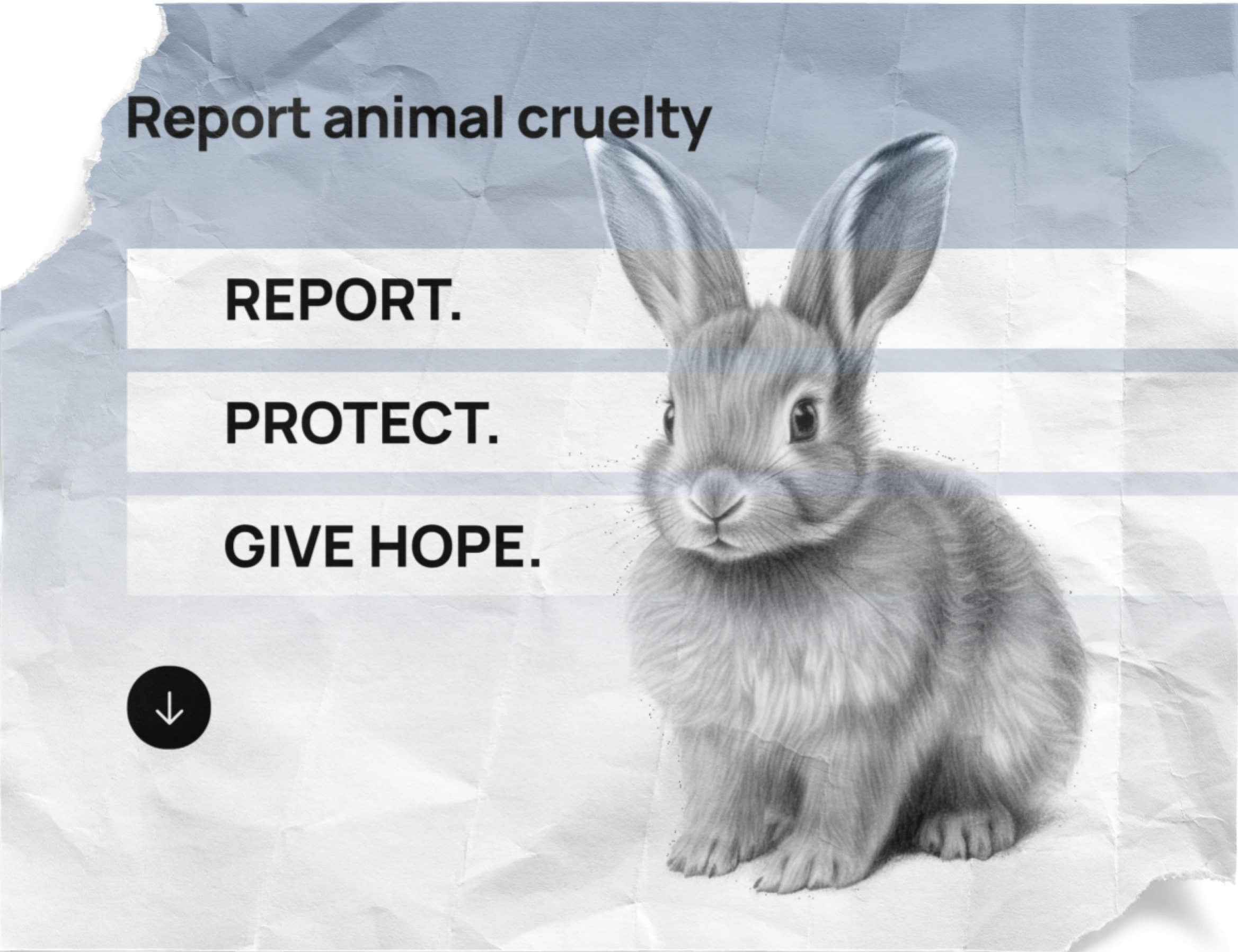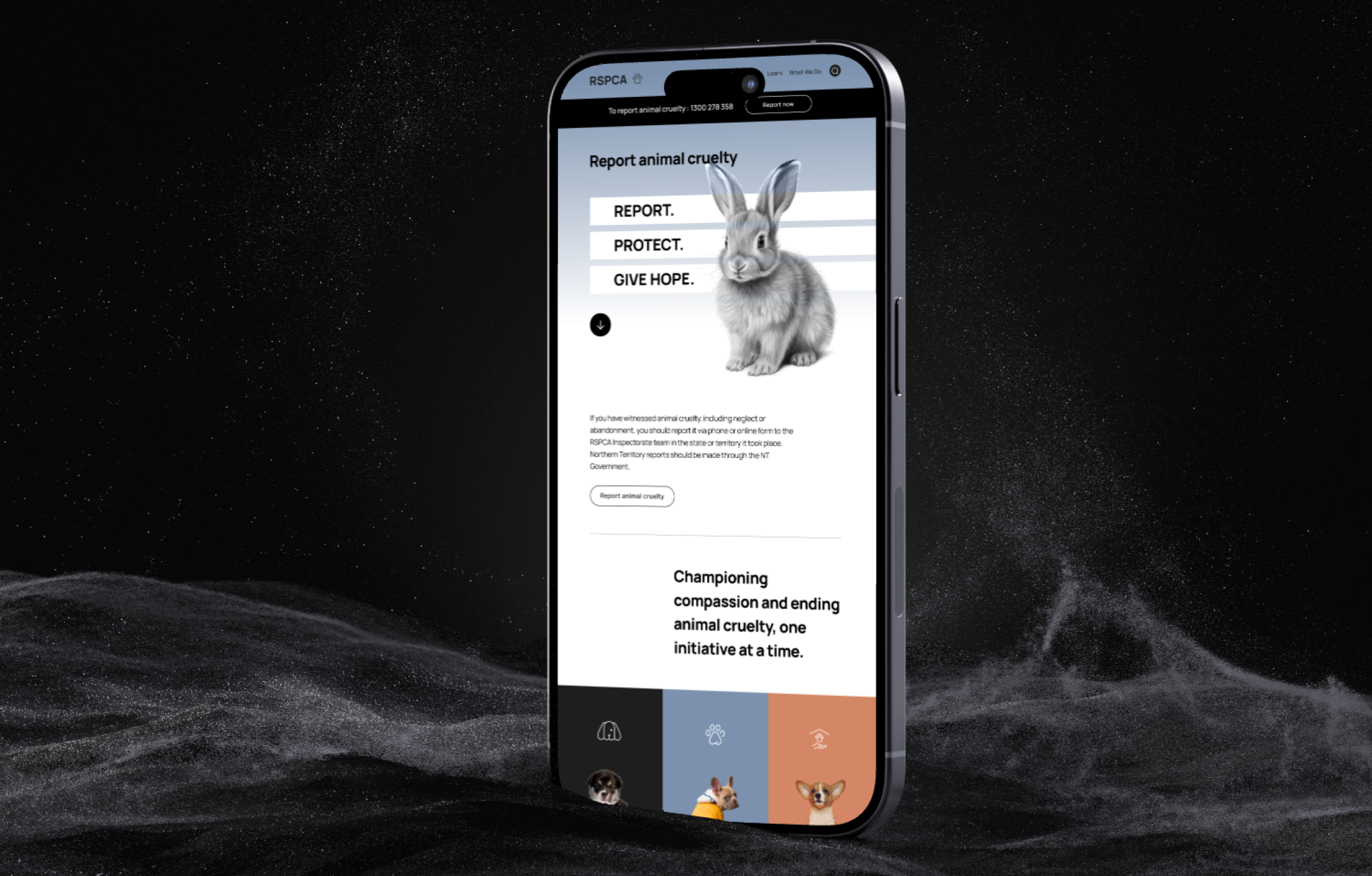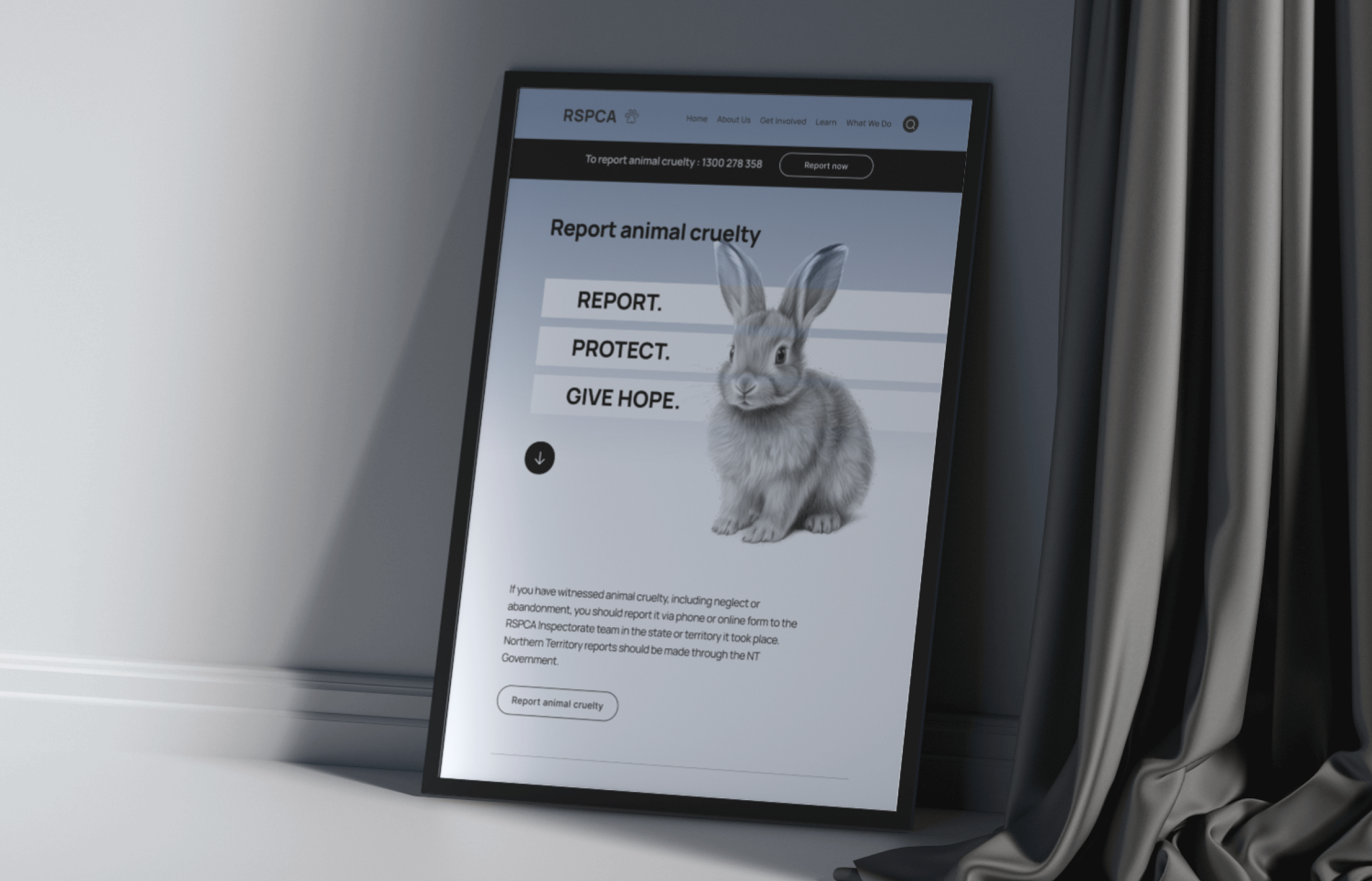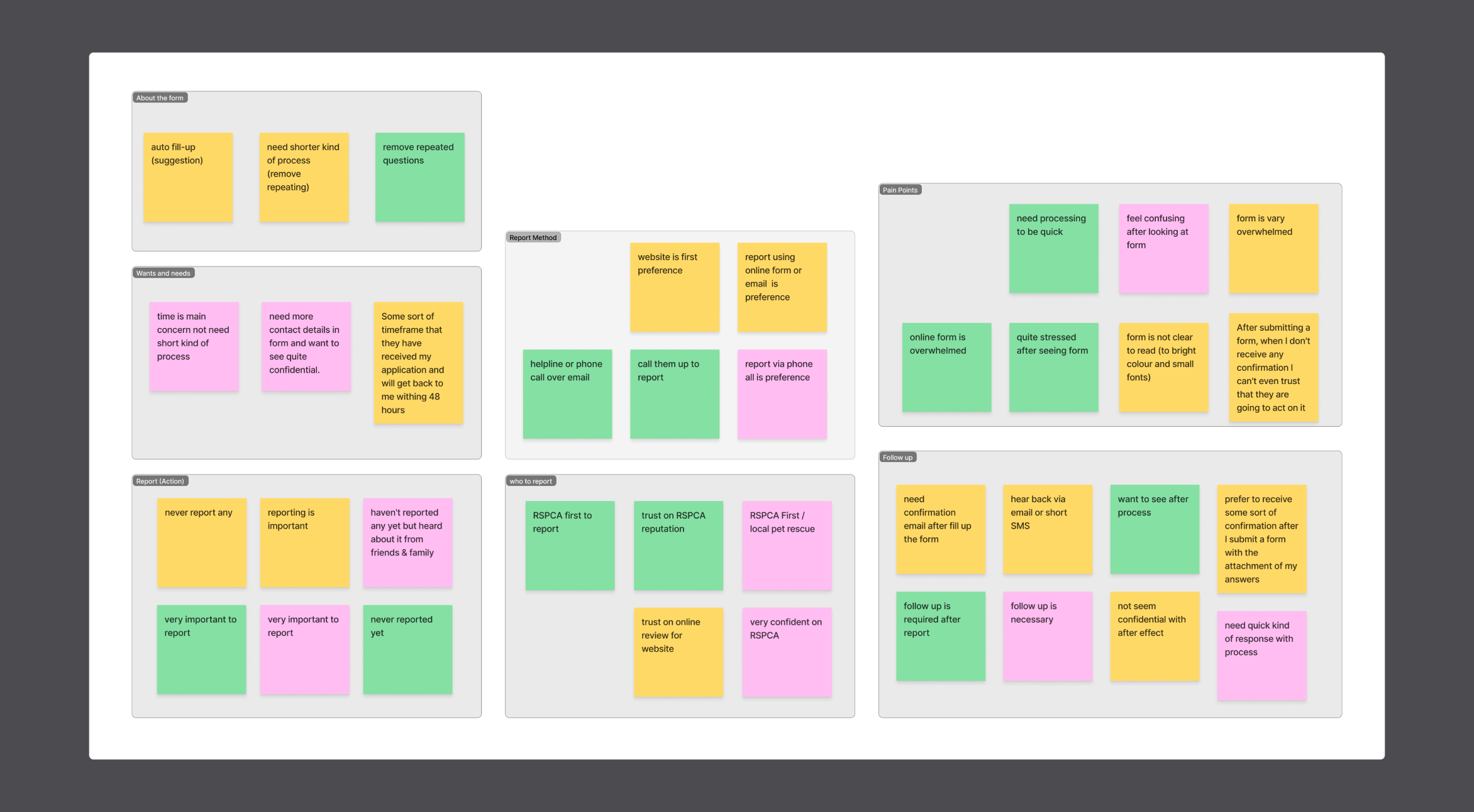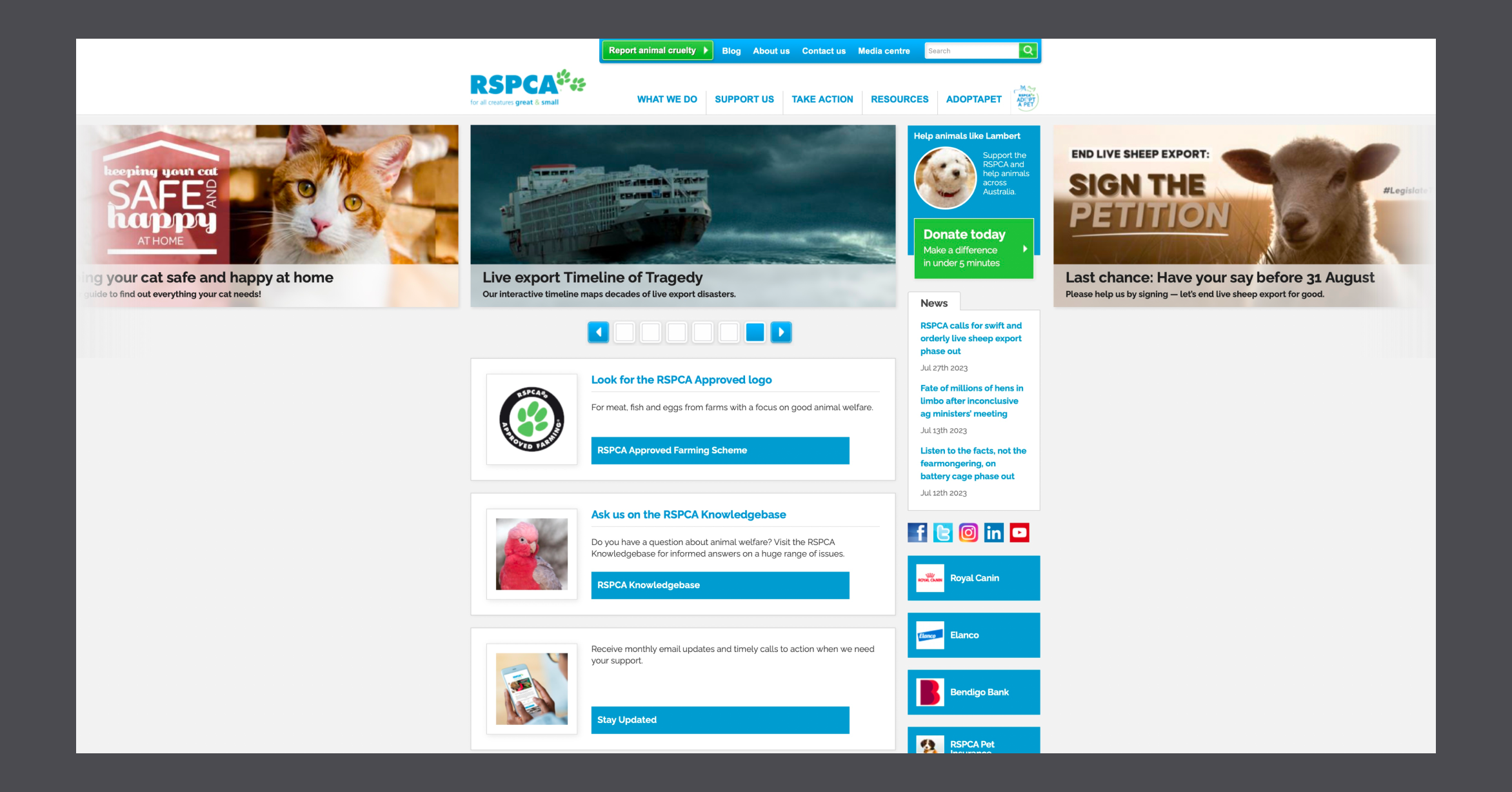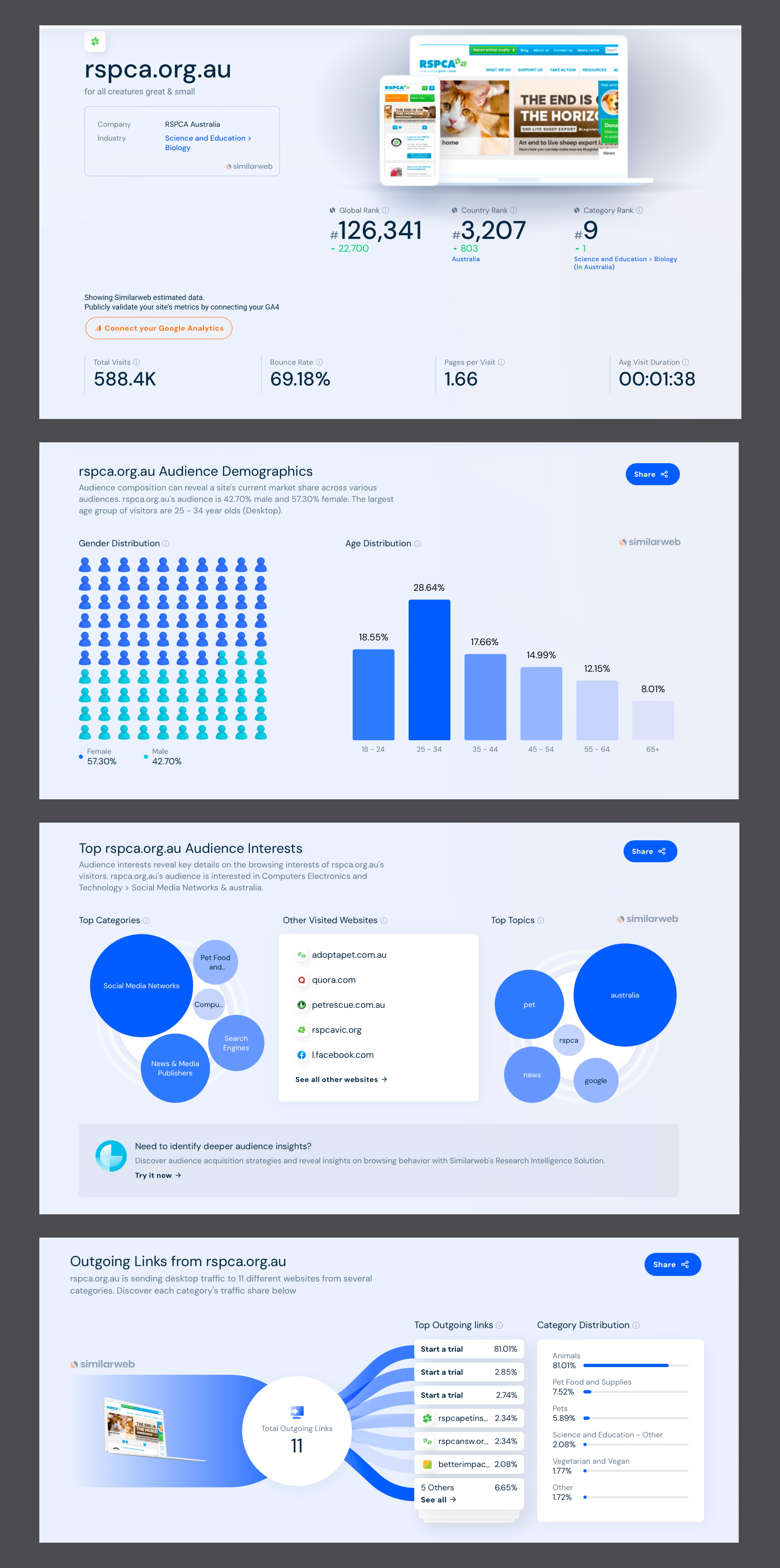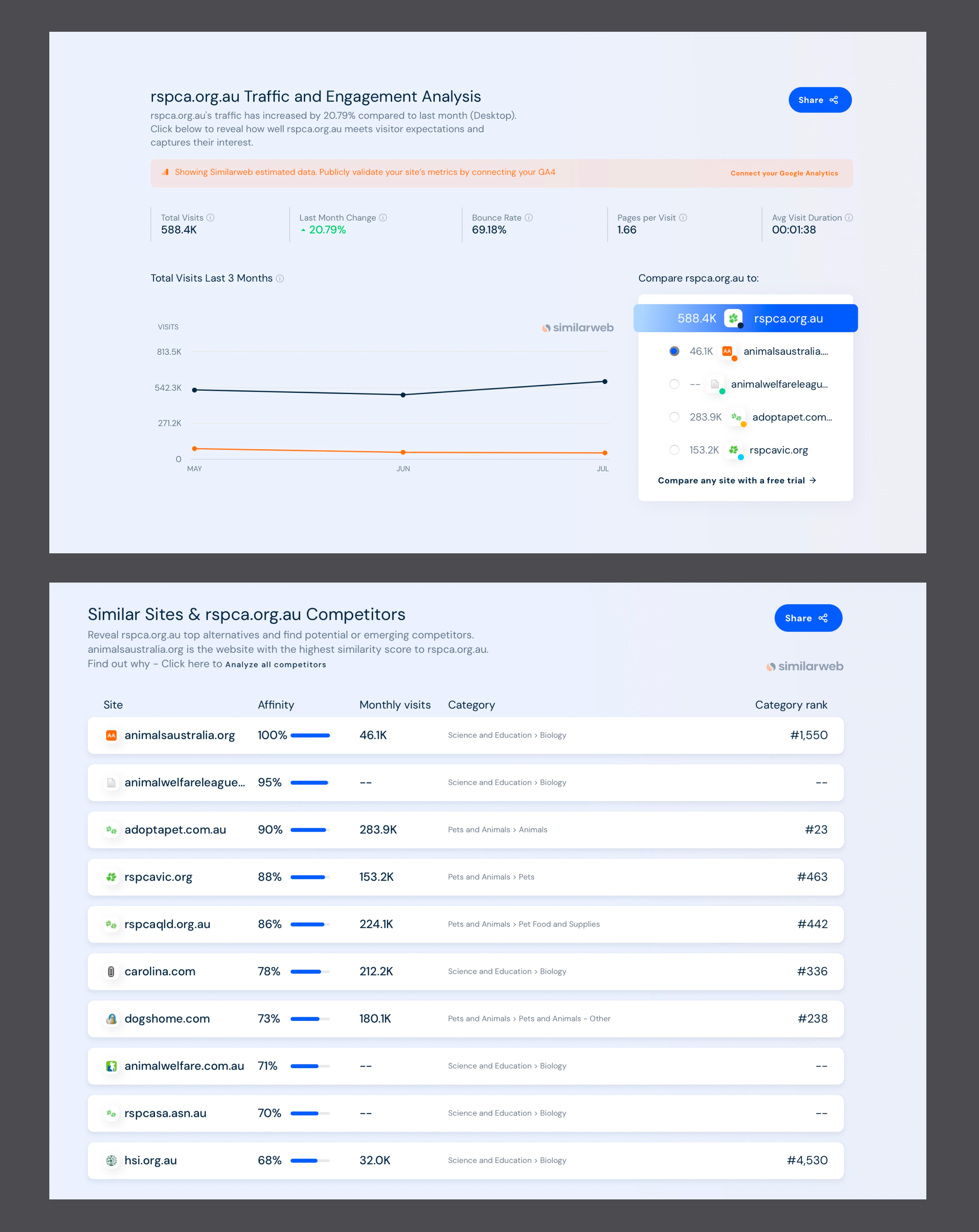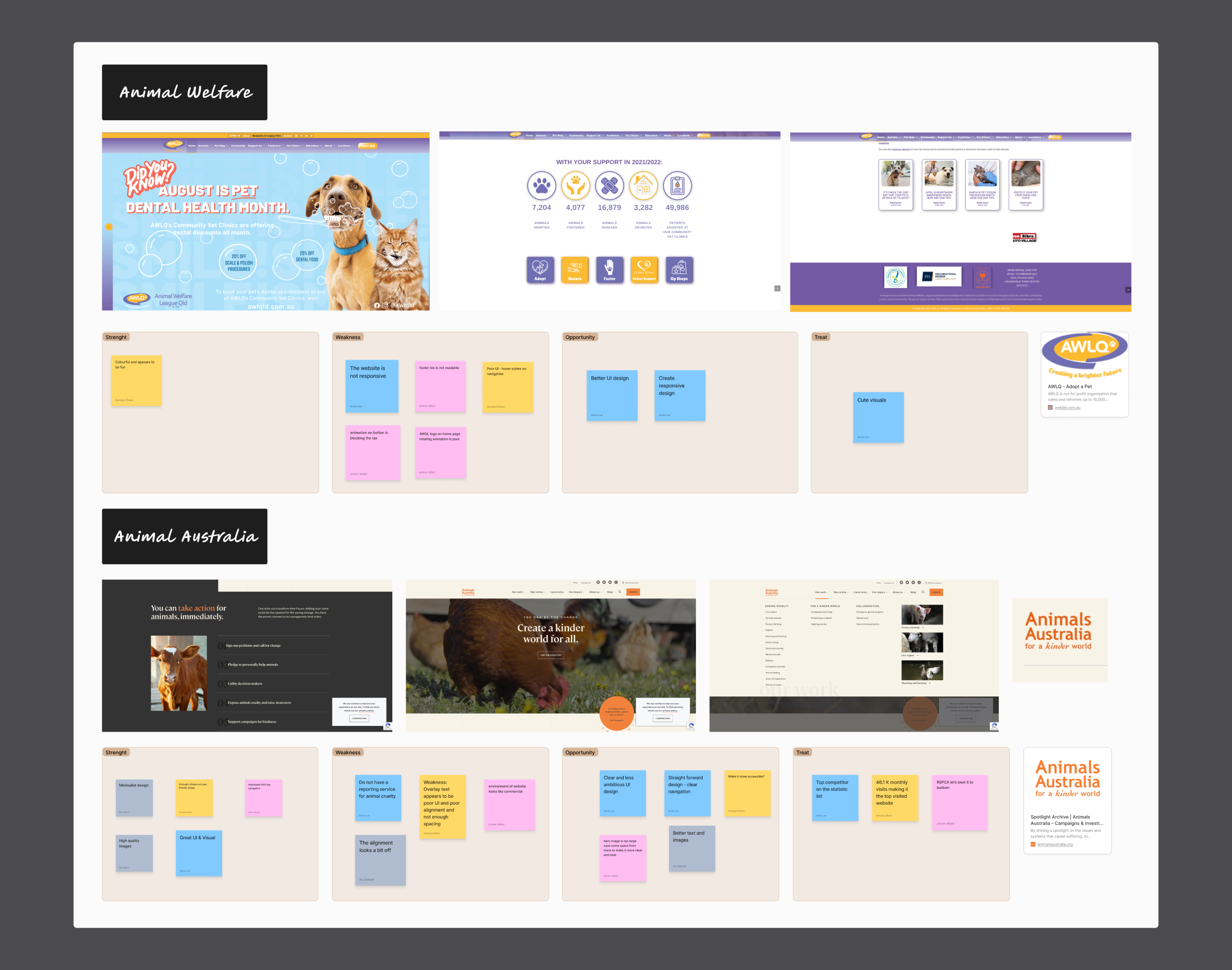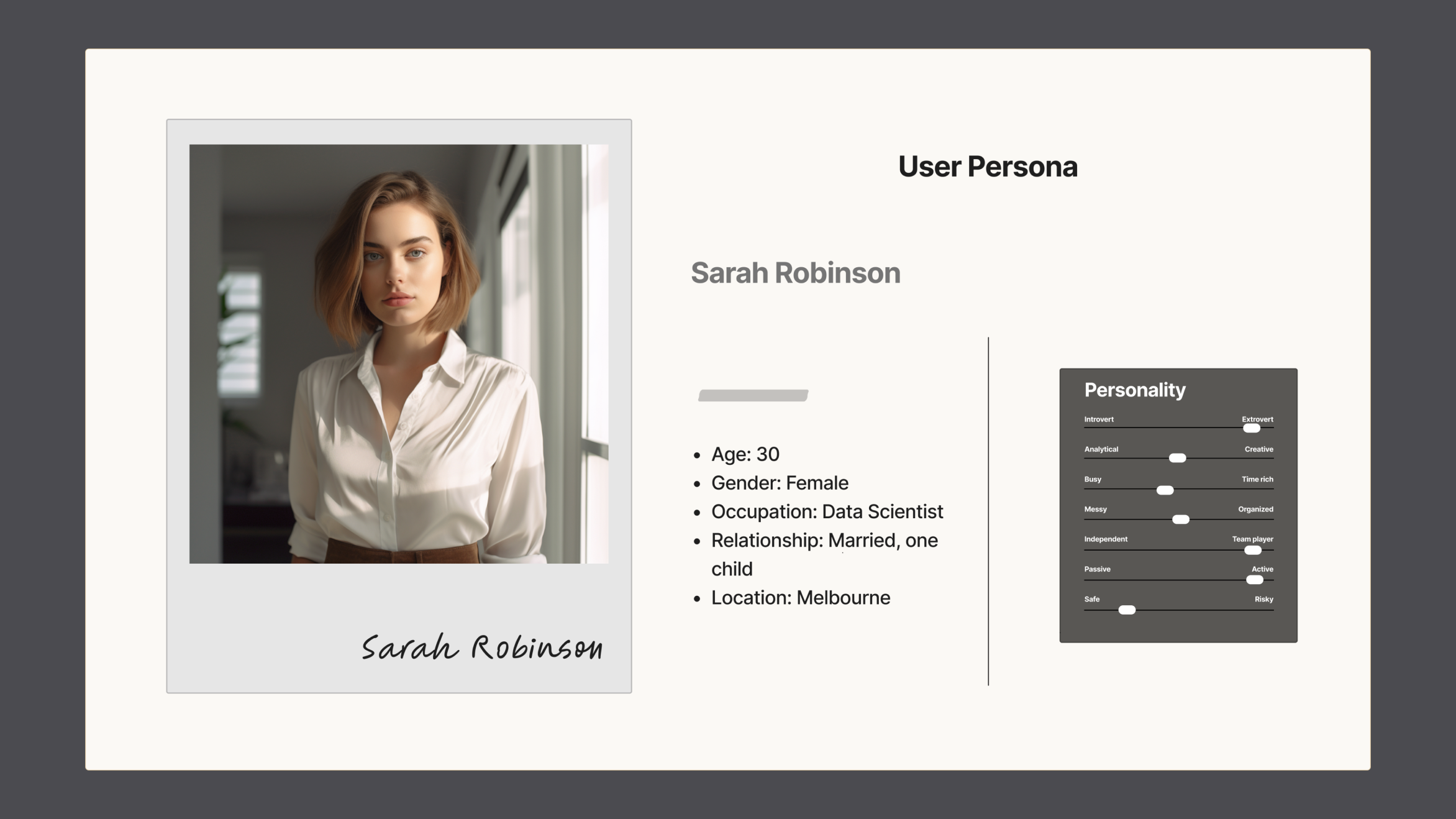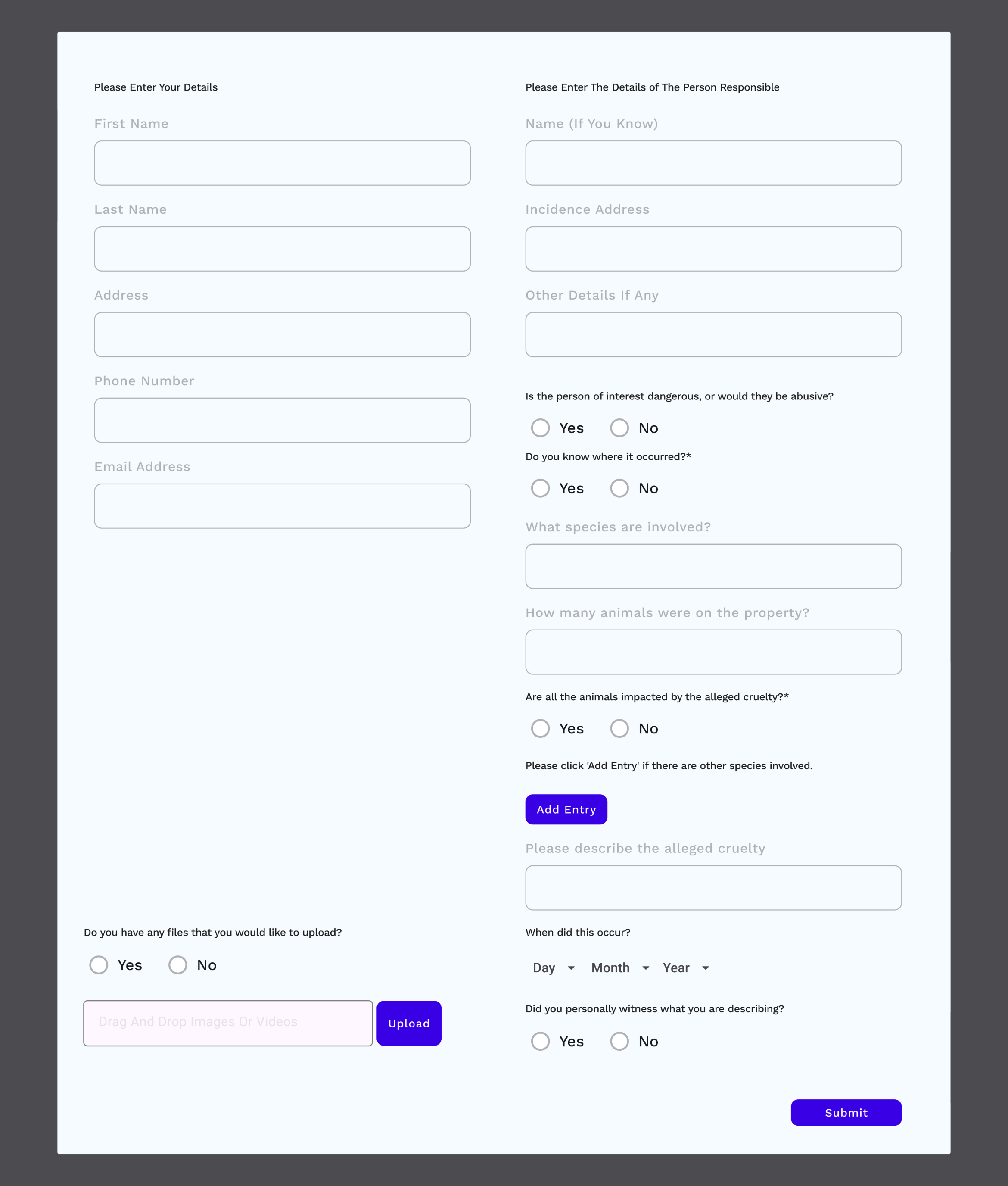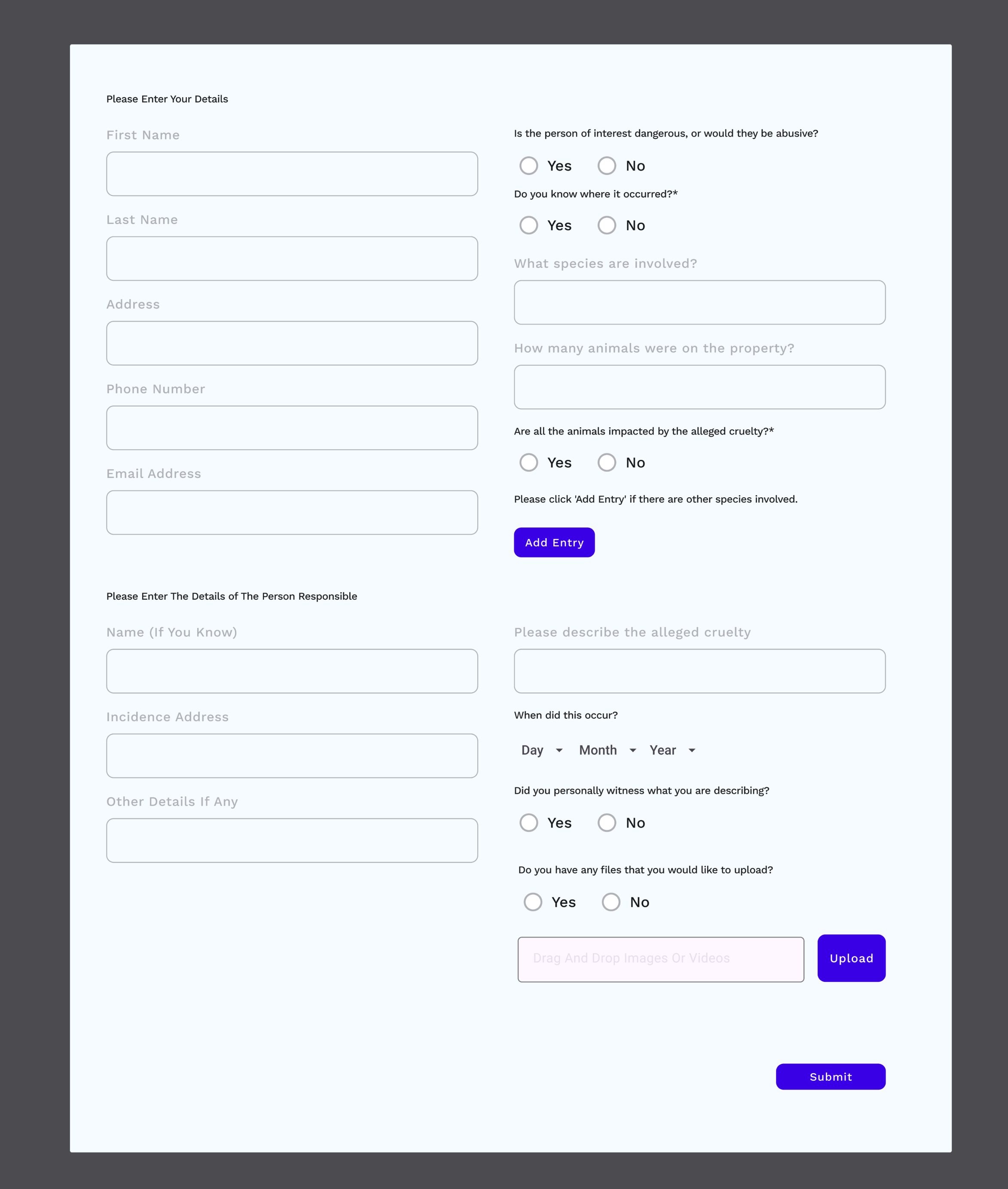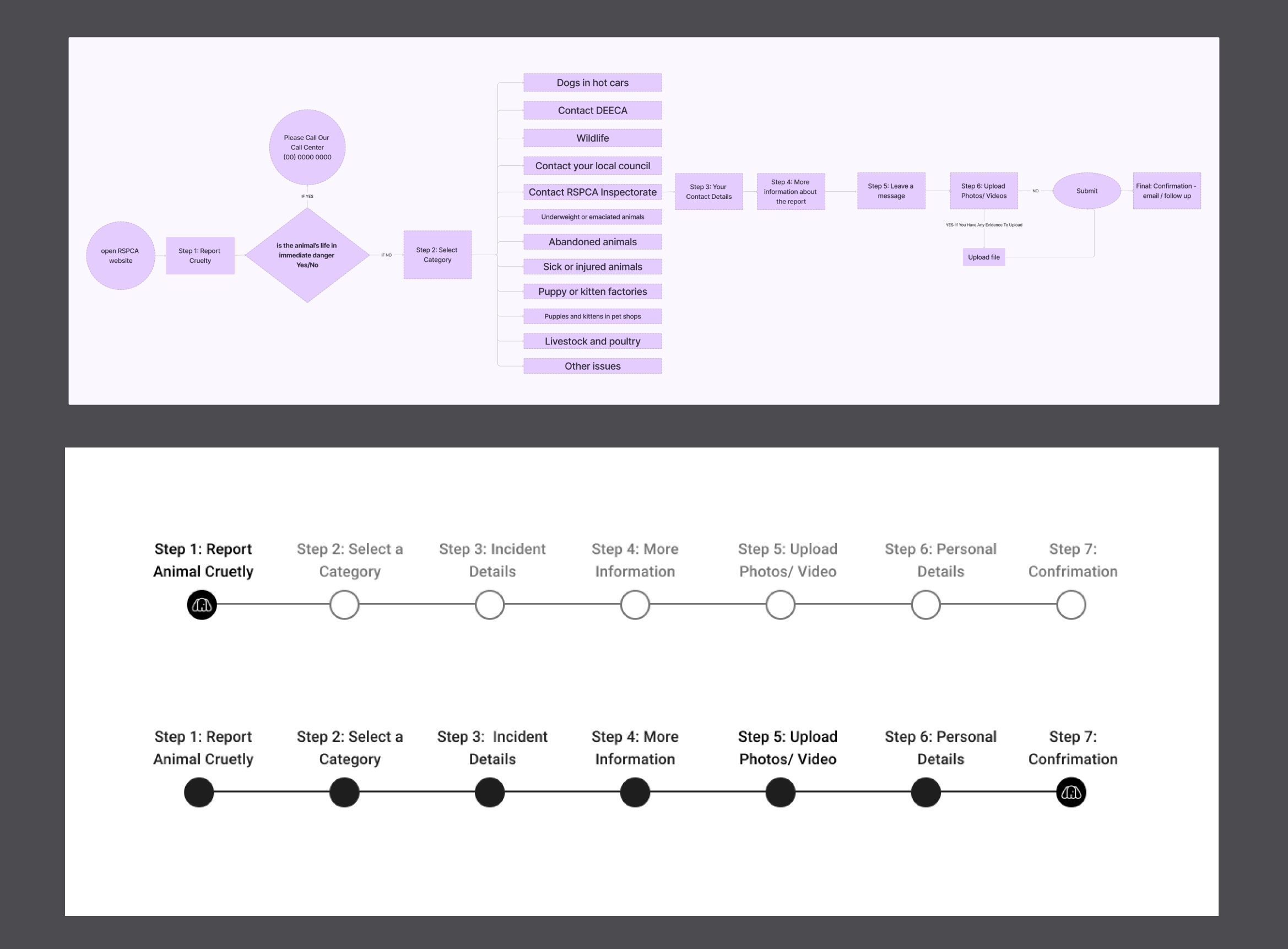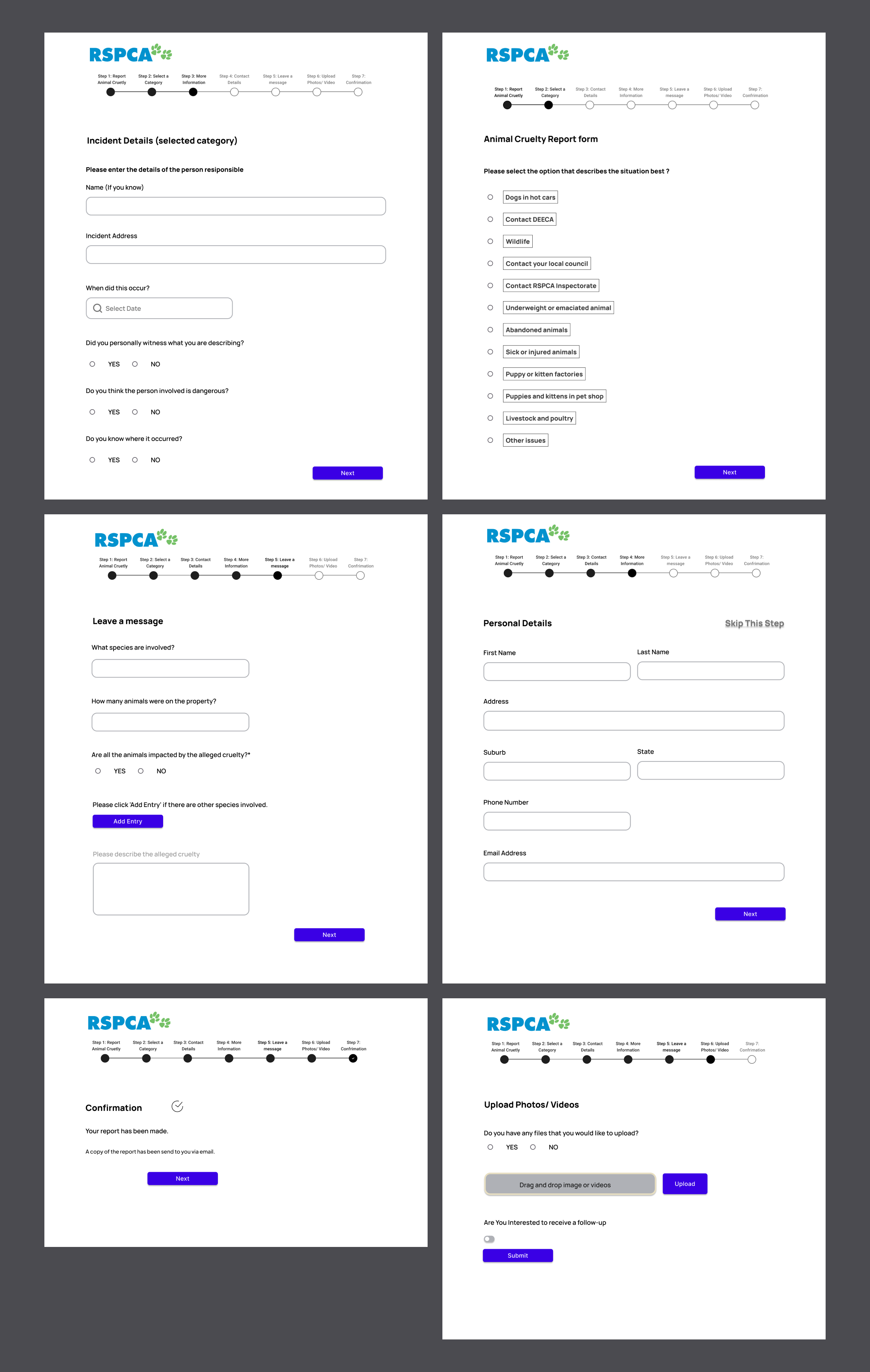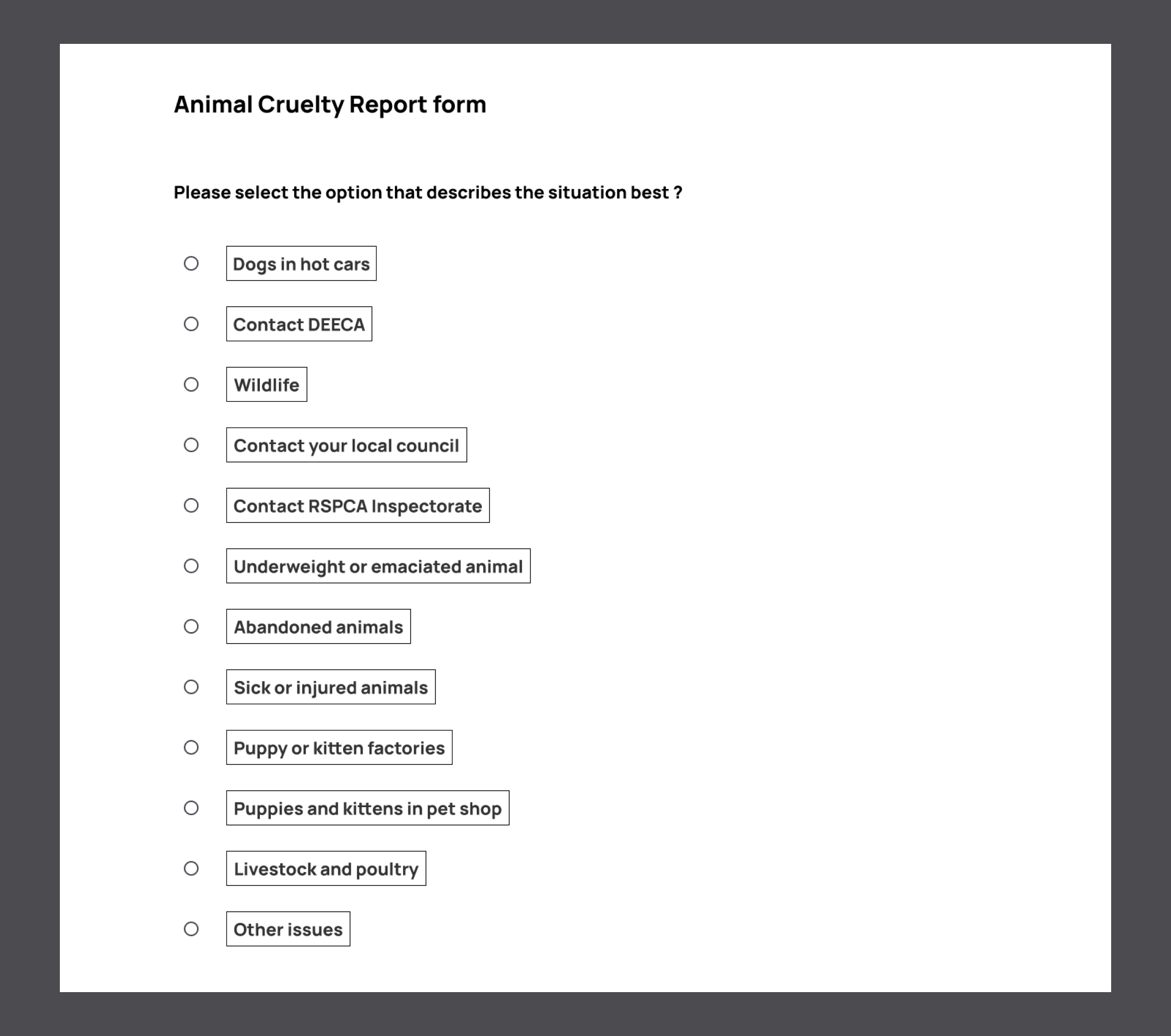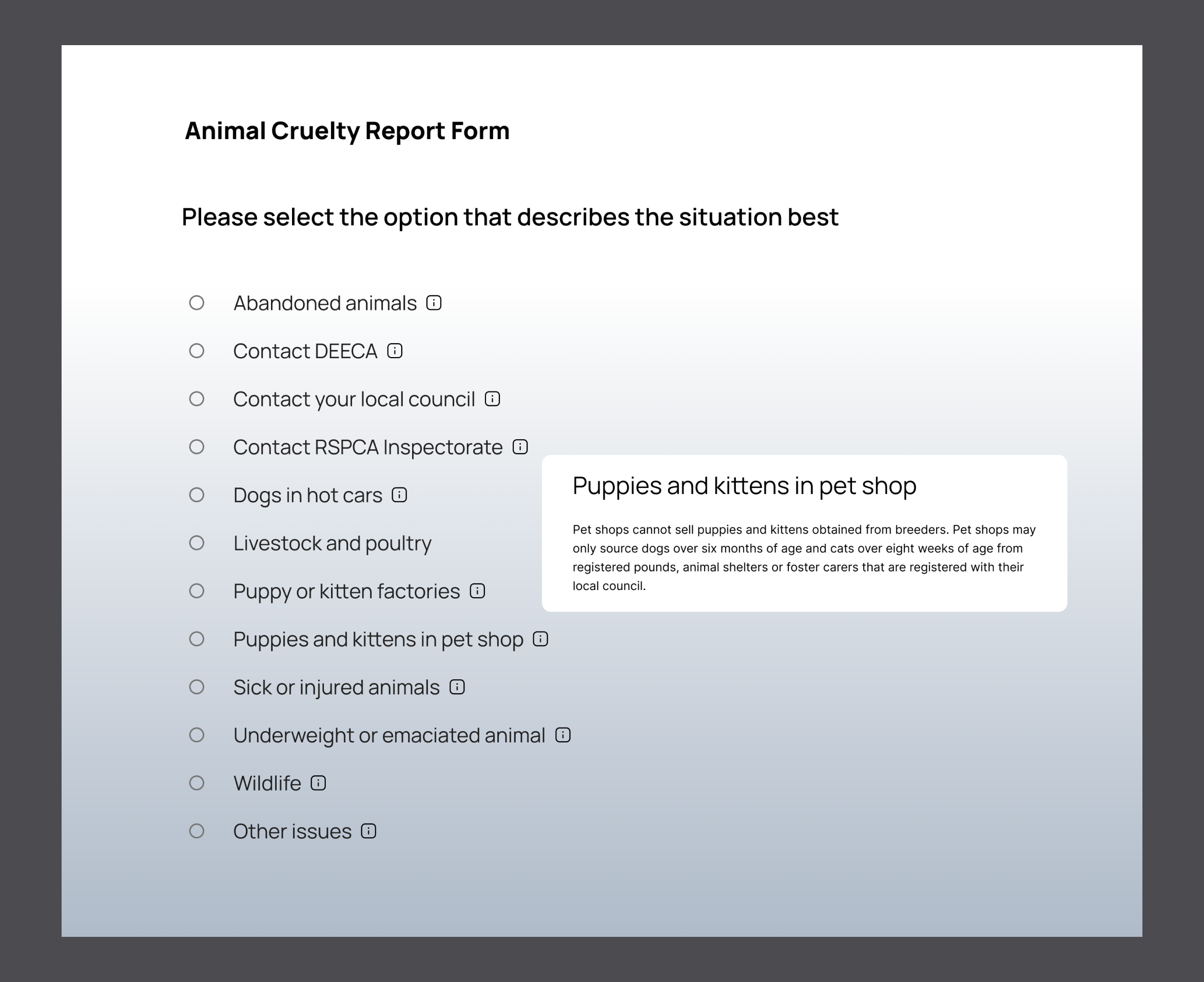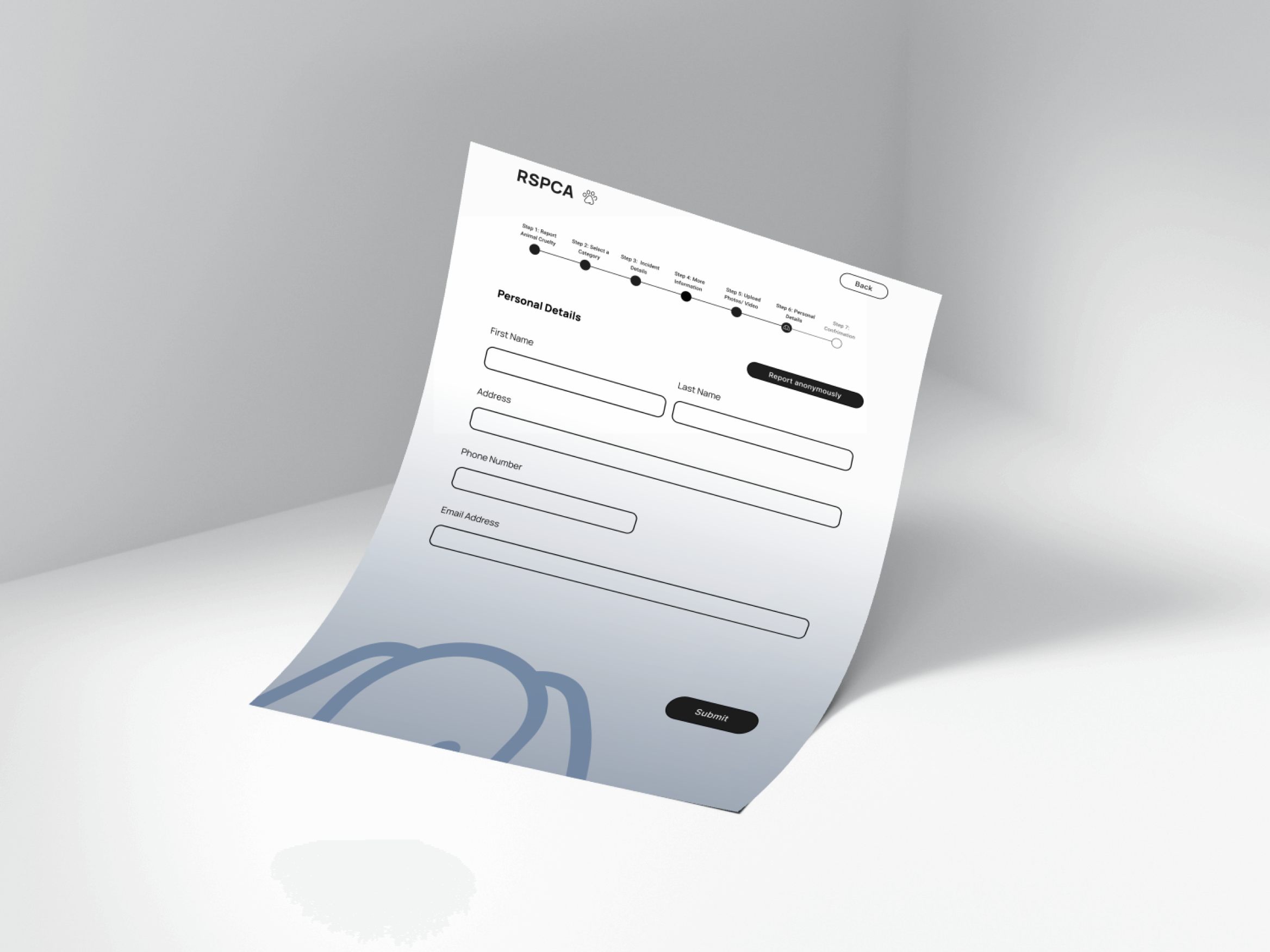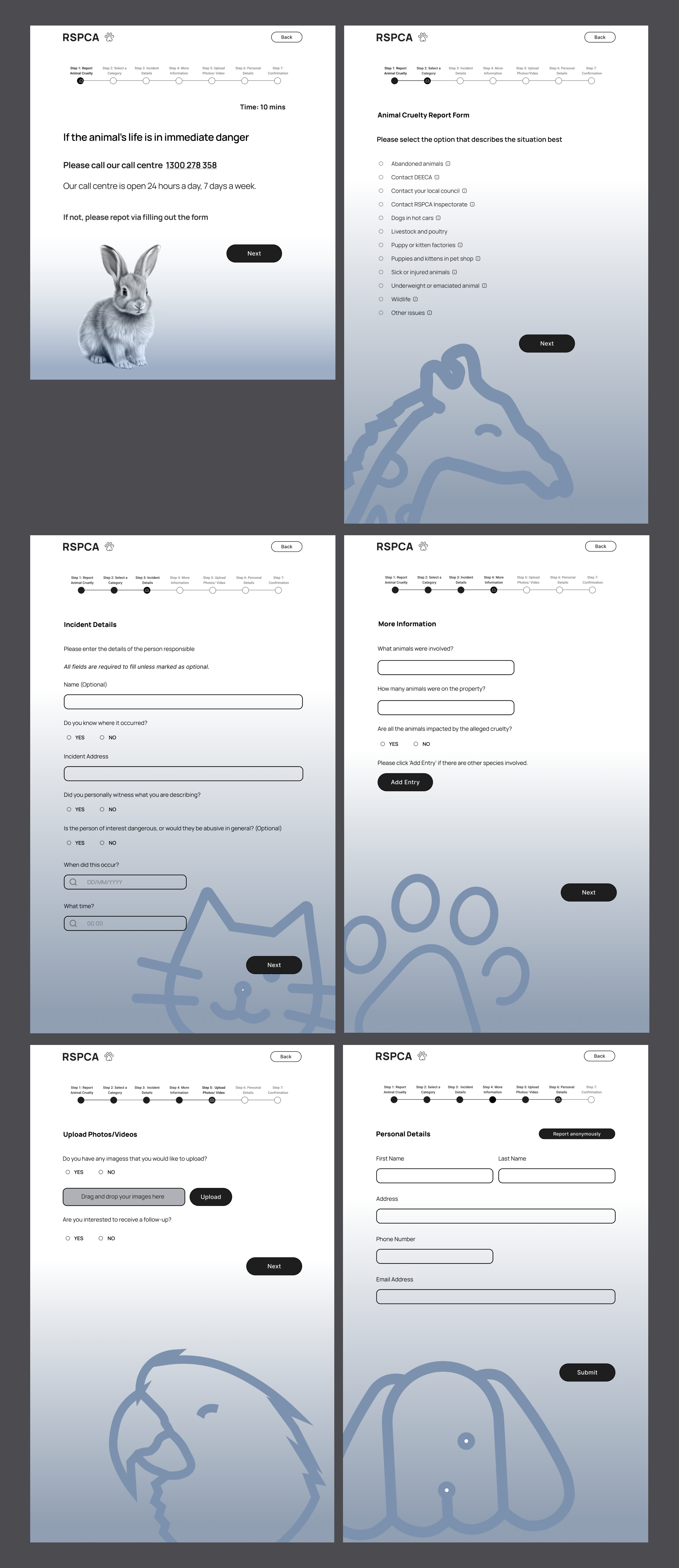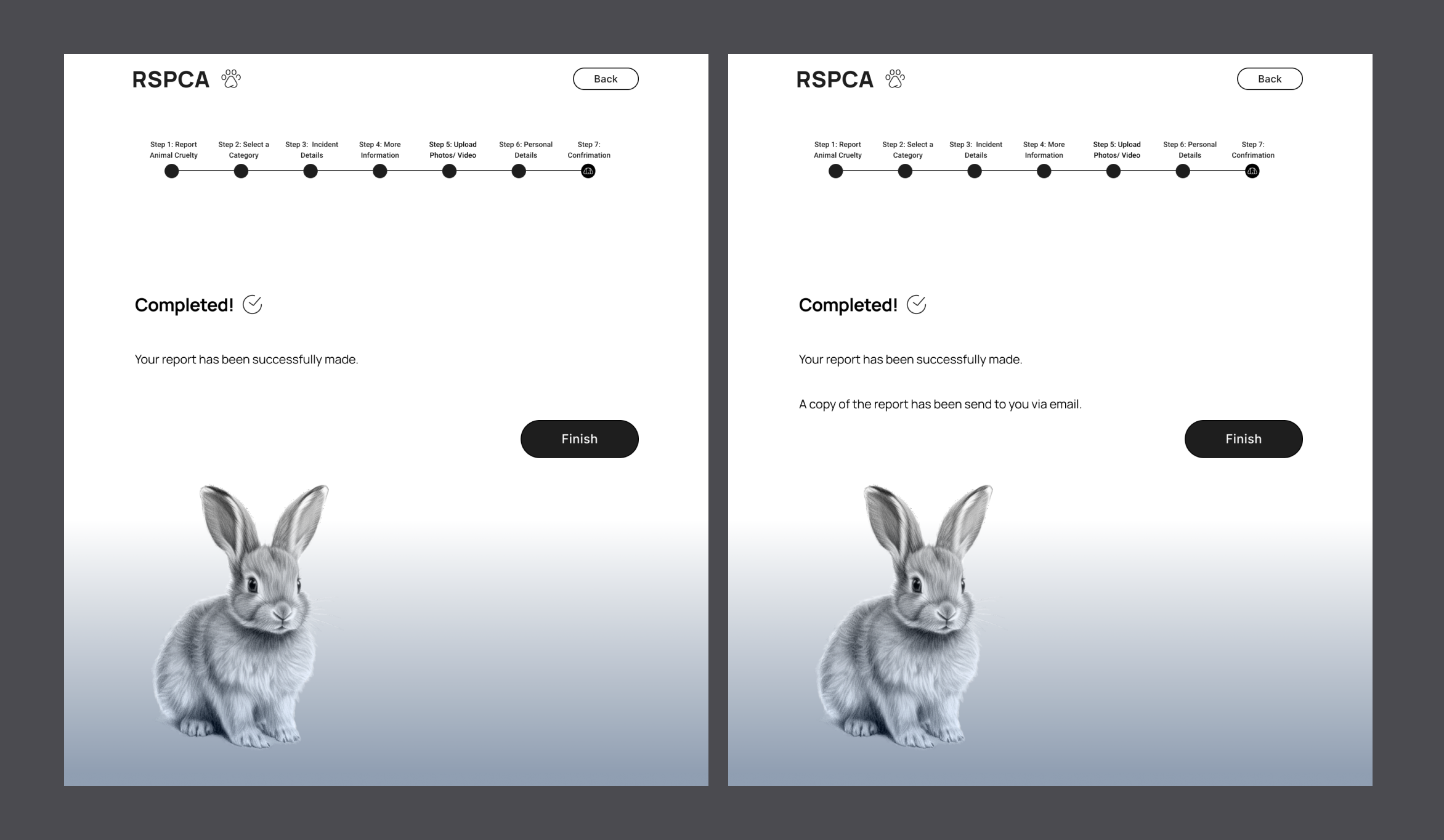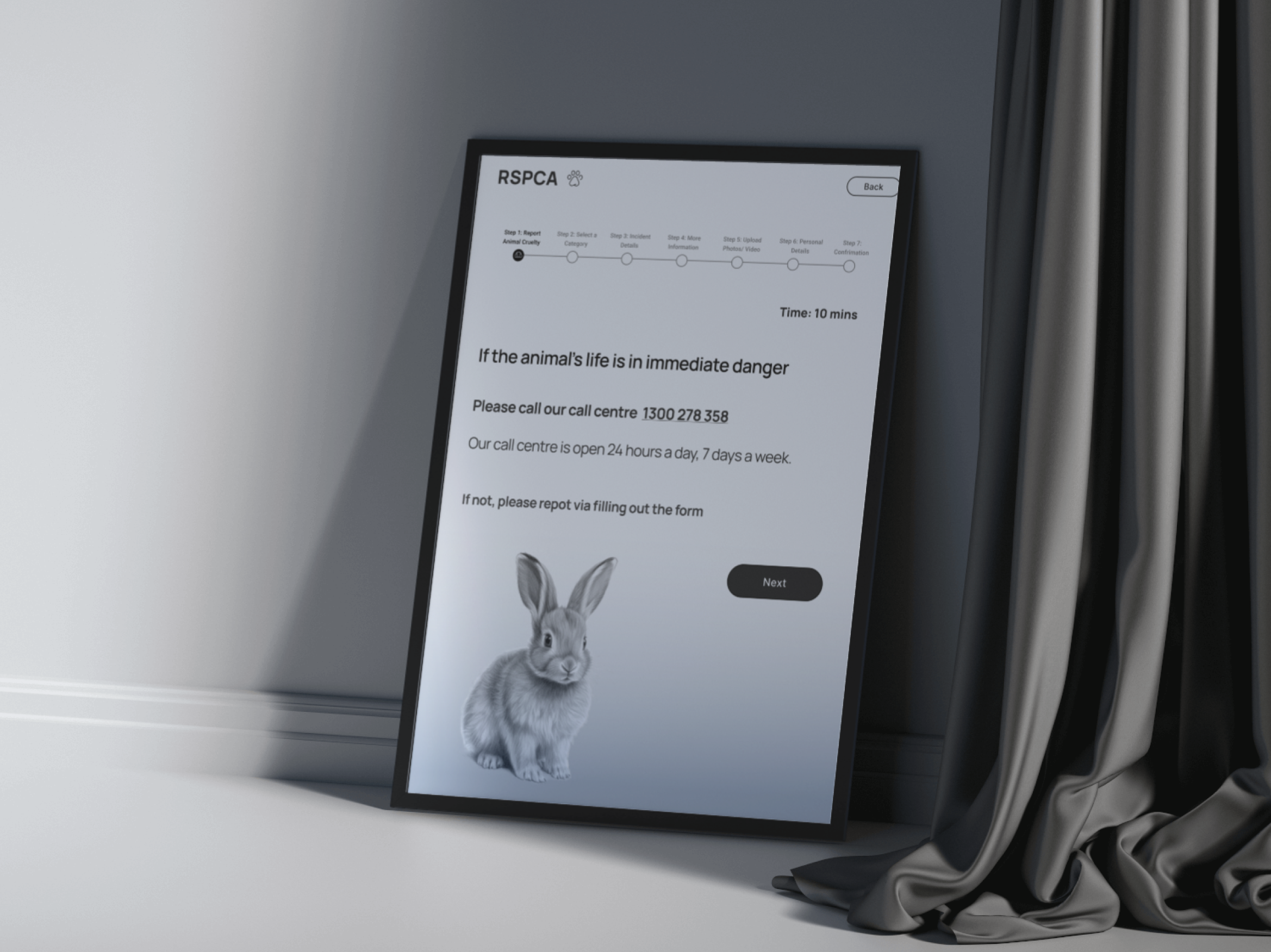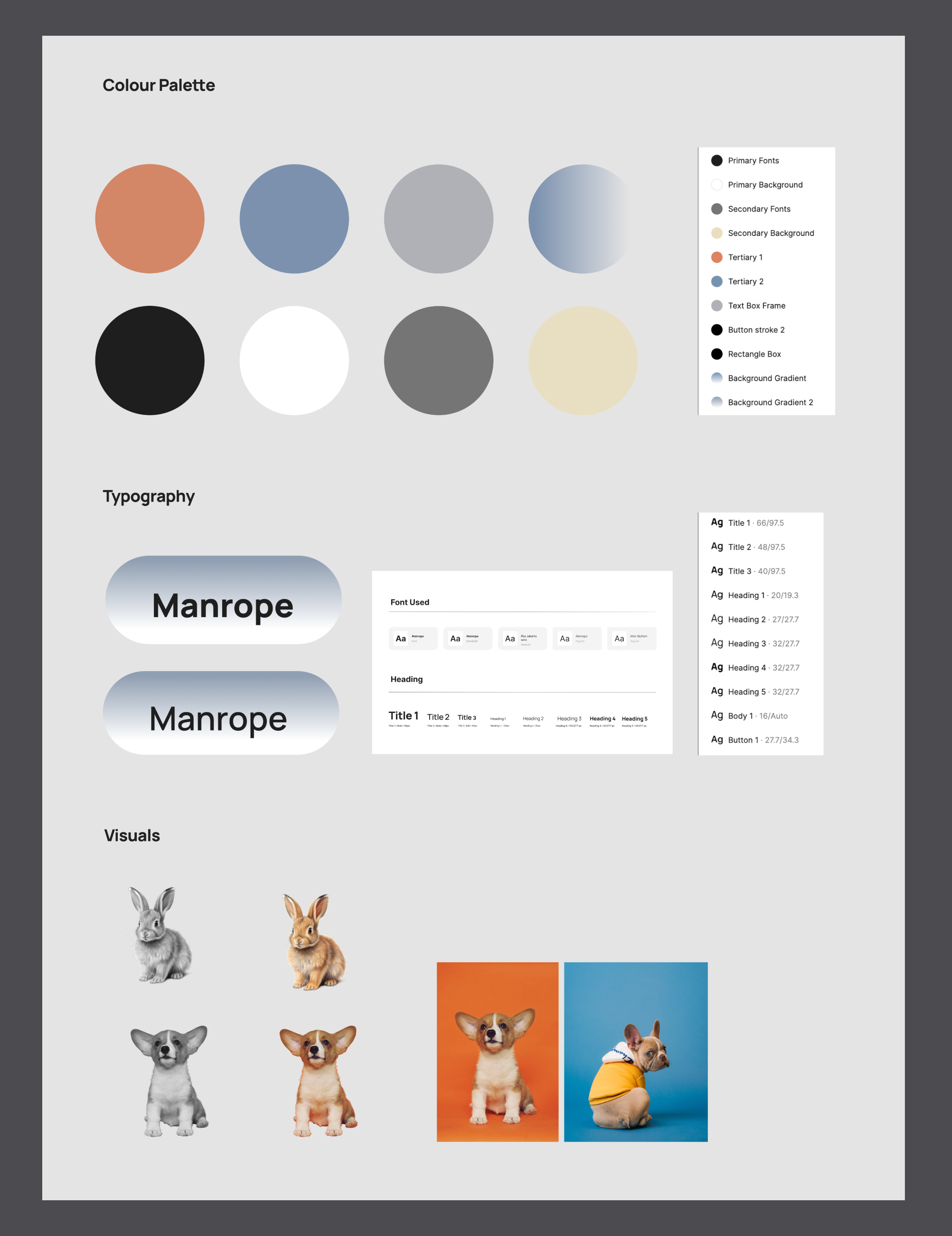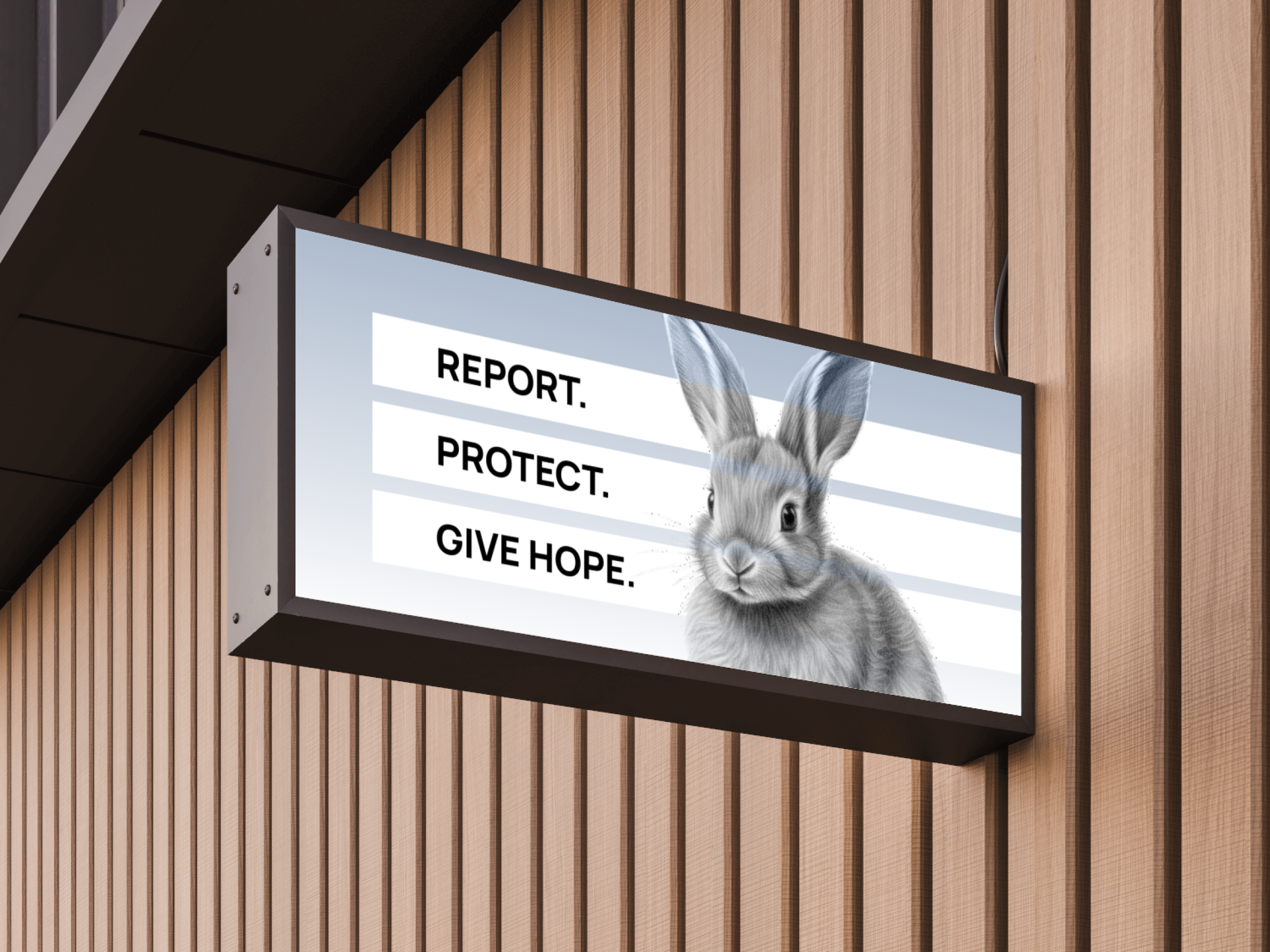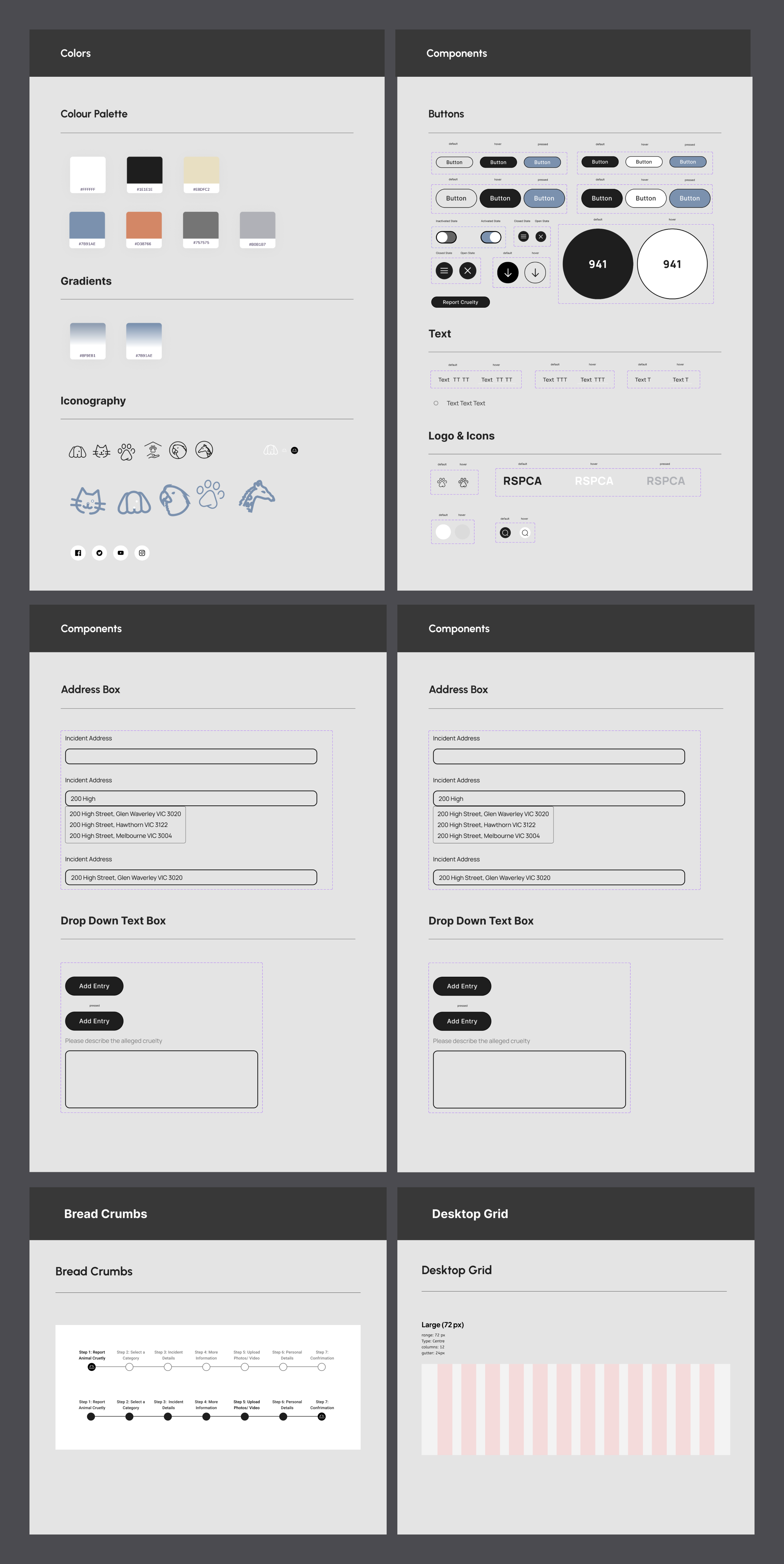Business Goals & Features
Based on the research findings and synthesis, and considering the business needs and goals, I have developed a feature blueprint aimed at achieving success.
Business Goal
Ensure regulatory compliance and user satisfaction by seamlessly integrating standardised abuse report forms across all states on the RSPCA website, thereby enhancing the effectiveness of abuse reporting nationwide.
User Goal
Enable users to report instances of animal abuse easily and effectively, providing a user-friendly experience that encourages transparency and accountability while ensuring their reports comply with relevant legal frameworks and regional requirements.
Common Coal
Streamline the abuse reporting process for users across all states, promoting clarity, accessibility, and professionalism in the reporting platform. This involves collaboratively designing user-friendly forms, incorporating stakeholder feedback, and iteratively refining the platform through usability testing and website analysis to empower users and eliminate barriers to reporting abuse.
Technical Requirement
Develop a unified abuse reporting system for the RSPCA website that adjusts to different state laws. This system should feature user-friendly forms allowing photo and video uploads, email confirmations, and updates on reported cases. Implement a 24-hour response system. Test for usability and analyse user behaviour for improvements. Ensure compliance with regulations and prioritise data security.
Architecture
For the RSPCA project, we crafted a strategic plan by aligning Common Goals, Design Implications, and Product Feature Priorities. This helped us create a clear hierarchy for our potential product solution, focusing on the needs of both users and our business objectives. We mapped out our plan and created user and task flows for each application to ensure that they met the needs of both consumers and the business.
Task Flow
Sarah, a user, discovered an instance of animal cruelty in her neighbourhood involving a 4-month-old injured puppy in need of shelter, food, and water. Consequently, she opted to report the incident to RSPCA.
